[Click on BLUE links for sources and information]
“qualia” : the internal and subjective component of sense perceptions, arising from stimulation of the senses by phenomena
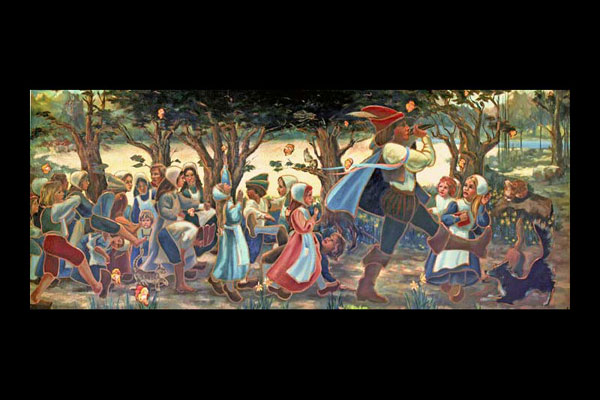
Pied Piper Painting, James Maxwell
There is geometry at play in life, not just in art― we call it symmetry.
What is it that makes you “you”? Is it an individual soul? Is there no “you” at all, the very idea an illusion? Are “you” one of many paths through time that could theoretically be traced back long before “you” were born and that will continue into a future whether or not “you” are aware of it? One of my grandsons told me he liked to travel with his family to “make memories.” I think he was on to something. Maybe “you” are a unique set of accumulated memories, conscious and unconscious, no more, no less. Or “you” could be something else entirely.
I remember as a very young boy hanging out at my dad’s hotel in the Sierras with the staff in their meal room. Even today the smell of vegetable soup takes me back to those days. So does a whiff of yeast and butter on freshly baked dinner rolls or the taste of a turkey sandwich made with homemade mayonnaise, salt and pepper. The almost inaudible sound of lizards scurrying about in a woodpile, the profusion of pine oils diffusing on a warm summer day, the taste of cold chocolate ice cream in the darkness of night pilfered from a freezer in an empty kitchen illuminated by moonlight. Memories make a life like rhyme makes a poem.
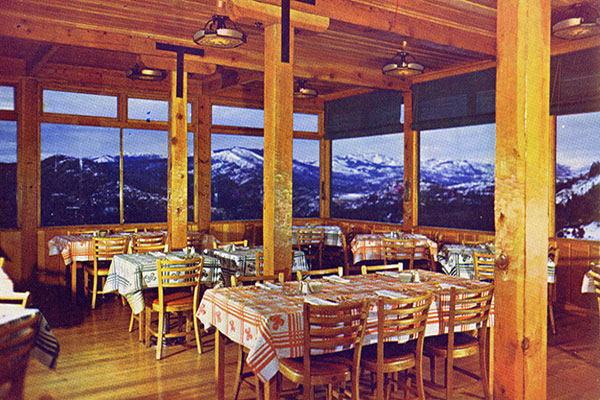
Dining Room, Nyack Lodge, circa 1950s
A decade or two later there was another restaurant, The Sea Gull. It had a distinctly English flavor, plain and simple diner/coffee shop fare, a few “fancy” items such as Sweetbreads, Chicken Kiev, and Calamari. The space was filled with “antiques and goodies” called “happy crappy” by the previous owners who became my life long friends. By the time I came to understand what that Sea Gull represented, it burned to the ground on a cold winter day disappearing in puffs of black smoke into a universe where, according to the law of Conservation of Energy, the constituent parts were altered but not destroyed.
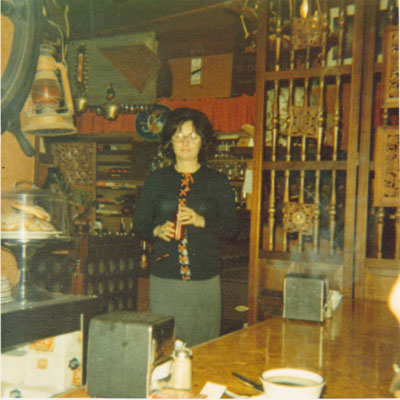
Marlene Hall, Old Sea Gull Restaurant Coffee Shop, circa 1970
Yet another restaurant appeared from the chaos. Not like some lost Shakespearean ghost or ethereal spirit out of the ether. That Sea Gull, the new Sea Gull, was constructed with attention and intention, the quirky creativity that comes from “a defective pruning gene”—what V.S. Ramachandran calls Synesthesia—a perceptual phenomenon common to many artists, poets, novelists, and musicians. Art in this description results from connections weakened or lost in the wider population.
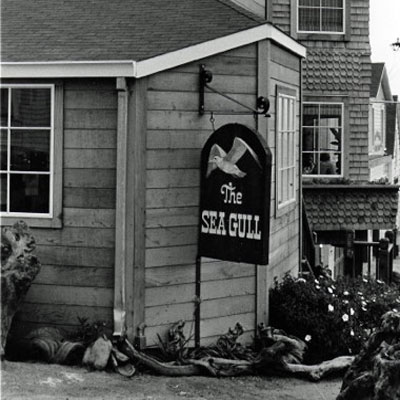
New Sea Gull Entrance, Nicholas Wilson Photographer
This brings us back to “qualia”, what it means to see something, to “really see it” as only “you” can see it, to the “hard problem of consciousness” so dubbed by philosopher David Chalmers. Most physicists, unlike philosophers, would agree with Sean Carroll in his masterful book humbly titled: The Big Picture: On the Origins of Life, Meaning and the Universe Itself. Carroll says “the Hard Problem is not only pretty easy; it really isn’t a problem at all—just a matter of conceptual confusion.”
Neuroscientist Antonio Damasio agrees with Sean Carroll. The body, mind and brain are all one and the same. No Cartesian duality here.
Mind and brain influence the body proper just as much as the body proper can influence the brain and the mind. They are merely two aspects of the very same being.
Antonio Damasio: The Strange Order of Things: Life, Feeling and the Making of Cultures
Carroll admits that most of us “feel” that we are “more than just a bunch of atoms knocking into one another under the influence of gravity and electromagnetism. I perceive, I feel—there is something that it is like to be me, something uniquely personal and experiential, a rich inner life that can’t possibly be accounted for by unthinking matter in motion, no matter how many atoms you congregate together.”
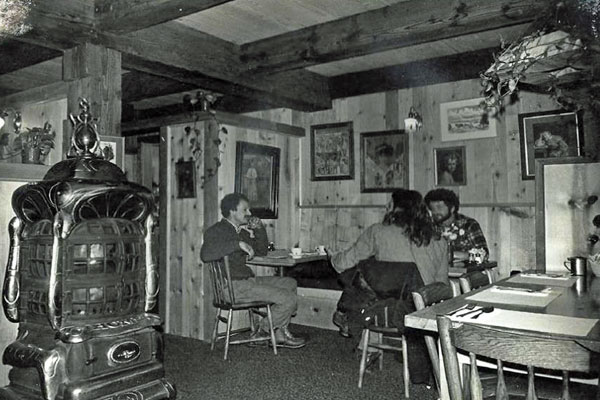
Opening Day, Back Dining Room, Dan Wilson, Gus Acosta, Dan Firpo Picture courtesy of Dan Wilson
Carroll hits us with the ultimate putdown: there is something it’s like to be “you” but it’s nothing special. So don’t get all puffed up with spiritual nonsense.
In his words: “the attributes of consciousness, including our qualia and inner subjective experiences, are useful ways of talking about the effective behavior of the collections of atoms we call human beings. Consciousness isn’t an illusion, but it doesn’t point to any departure from the laws of physics as we currently understand them.”
It’s just physics. Yes, it seems to be that way agrees Bill Bryson in the magnificent introduction to his book: Bill Bryson: A Short History of Nearly Everything. But, it is very strange when you think about it.
It is a slightly arresting notion that if you were to pick yourself apart with tweezers, one atom at a time, you would produce a mound of fine atomic dust, none of which had ever been alive but all of which had once been you. Bill Bryson
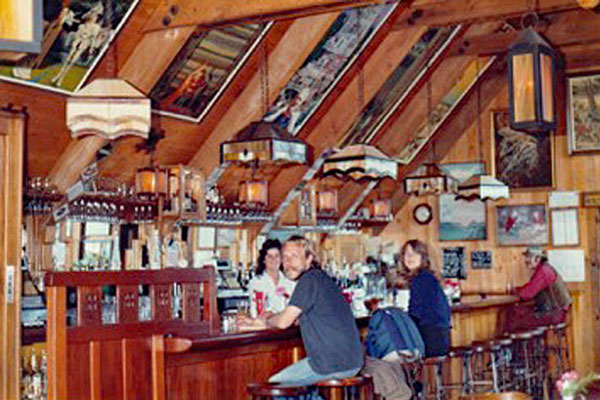
New Sea Gull Cellar Bar in its heyday.
To be honest, no one knows for sure. I’m inclined to throw my hat in with Carroll and Damasio and Bryson yet I remember times past when I sat alone in the Sea Gull admiring the exquisite details born out of the genius of David Clayton and his expert crew and the artists that followed him. I looked, I wondered. I even occasionally imagined I saw ghosts. Imagination is a wonderful but spooky thing even if it’s just atoms being atoms.
Because it works so powerfully on the human psyche, art in the most basic forms (color, props, décor, lighting, music) can be used in devious ways to influence people, even customers in a restaurant.
In the foodie world of today, massive energy is spent on choosing the right color, the right props and even the right serving staff. For example, it is thought that red increases heart rates and makes people eat faster. Fast food restaurants, fast casual restaurants, and establishments that want a high table turnover often choose red. Brown is supposed to be the right color for coffee shops, green for health food stores (a little too obvious I’d say), and so on. There are subtle psychological factors in play. For example, “when it came to the unhealthiest part of the meal—alcoholic beverages and desserts—customers tended to order significantly more when they had an overweight (but not too overweight) server. Psychologists call this a ‘situational social norm.’ In other words, the overweight waiter changed social media expectations, more or less giving diners a license to indulge themselves.” Props can play a role; for example, nautical decor makes us more likely to order seafood. We’re inclined to choose drinks that are related to the theme of the bar, whether it’s ordering whiskey in an Irish pub or having a glass of red wine at an Italian restaurant. Another study indicated that bars that play drinking songs get their customers to order more drinks.
Dimmer lighting brings people closer together, causes them to speak more softly and leads to longer stays. Soft jazz music tends to keep people in the restaurant longer. This has been shown to lead to higher food ratings (and a larger bill). The color of orange juice can alter how sweet it seems, a glass of wine tastes better under red lighting and whiskey is thought to have a woodier taste when it’s sipped in a room with wood décor.
All the above might be true yet we can still find important exceptions such as that “hole in the wall” that becomes the hangout of choice in spite of breaking all the rules. Most people don’t respond well to slick and smooth salesmanship especially when it’s too obvious. Sometimes it’s best to go with your gut and forget the over researched advice of the professional consultants.
We all know that Art is not truth. Art is a lie that makes us realize truth, at least the truth that is given us to understand. The artist must know the manner whereby to convince others of the truthfulness of his lies.
Art is a lie or a miracle feat that turns two dimensions into three (or more). Art makes you see differently. And, it’s one way of discovering who “you” are.
Long before Picasso ancient artists in what is now Spain were making creative works of their own, mixing pigments, crafting beads out of seashells, and painting murals on cave walls. Whether or not you interpret these ancient creations as art or as precursors of art depends on your preconceptions about what art is, conscious or unconscious, and on your subjective feelings when you see them.
The master of memory, Marcel Proust, speaks to how art though it may be a lie removes our often false perceptions and restores a measure of truth to our thoughts.
Our vanity, our passions, our spirit of imitation, our abstract intelligence, our habits have long been at work, and it is the task of art to undo this work of theirs, making us travel back in the direction from which we have come to the depths where what has really existed lies unknown within us. Marcel Proust
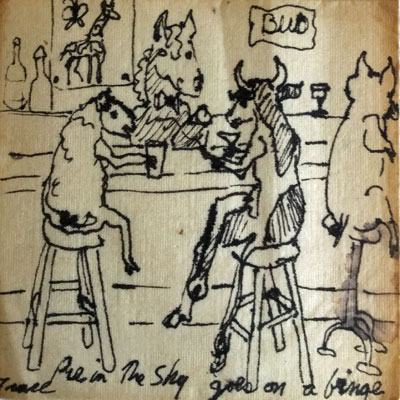
Sea Gull Cellar Bar Napkin Art
The new Sea Gull was a place where art and reality met. When the Sea Gull was rebuilt after the fire, the strategy was to hire a group of creative people and turn them loose to build the restaurant. David Clayton, Philip O’leno, James Maxwell, Stan Kelley, Sandra Lindstrom, Phil Brock and many others made the space what it was. None of this was planned with the “right” color or “prop” to attract a certain crowd. The customers that were attracted were as diverse as the artists and craftsmen who created the space.
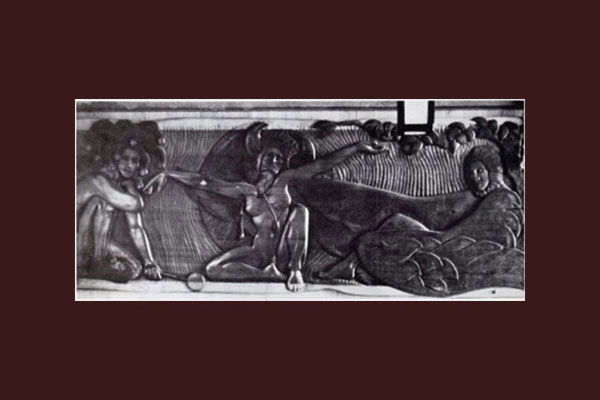
Tritogenea, redwood bas-relief by Stan Kelley
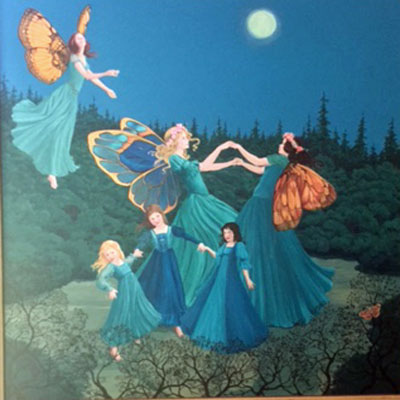
Oil Painting by Sandra Lindstrom
I would say its common sense to hang on to people who are creative and passionate, and avoid borers. Borers are the great enemy of civilization. Hang on to passion and passionate people who enjoy what they do. Passion is contagious, and there is nothing more contagious. Read widely. That is the catalyst of creativity. V.S. Ramachandran
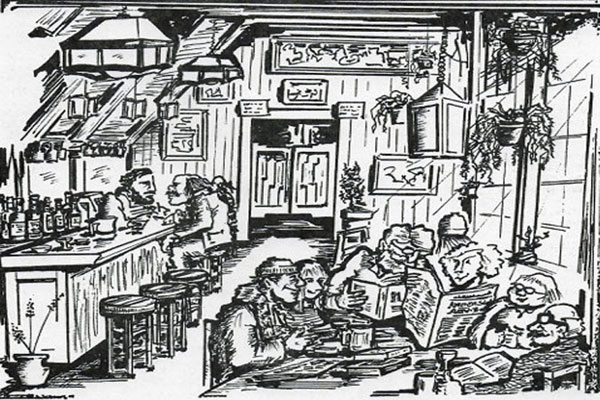
From The Letters of Wanda Tinasky, author TR Factor, artist Fred Sternkopf
Creativity starts with attempting to paint something of what we actually see when we look around, rather than what we know we see based on some arbitrary preconditions. The true artist creates because they must. To have the chance to do their best is what they live for. This is expressed in a short story centered on food, Babette’s Feast, by Isak Dinesen.
At the end of the story Dinesen leaves us with much to think on including this response from Babette when confronted with the fact that she has spent all her lottery winnings to create the kind of gourmet treat she was famous for when she lived in Paris.
“Poor?’ said Babette. She smiled as if to herself. “No, I shall never be poor. I told you that I am a great artist. A great artist, Mesdames, is never poor. We have something, Mesdames, of which other people know nothing.’ Isak Dinesen, Babette’s Feast
That is what I thought and wondered about on those late nights or early mornings when I sat alone and took it all in. Preparing food and drink is an art as Babette’s story teaches us. In fact, there is art in every life. Over the nearly thirty years of the Sea Gull’s existence in its many forms all who contributed were artists in their own right. If those who visited found out something about themselves then they too were artists. And, an artist, a true artist is never poor.
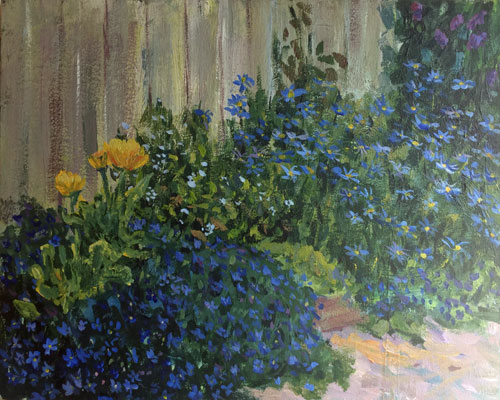
Oil Painting of Sea Gull Garden by Carl Mays
It is impossible to discuss art at the Sea Gull without mentioning the napkin artists. Roy, Jack, Max, Estelle, Sula, Sandra, Efroym, Avery and so many others. They and their work are on nearly every page of this blog and they were a fixture at the Sea Gull Cellar Bar. They made us laugh and squirm and occasionally feel political outrage. They made us happy. And in some moments they even informed us about who “we” are.
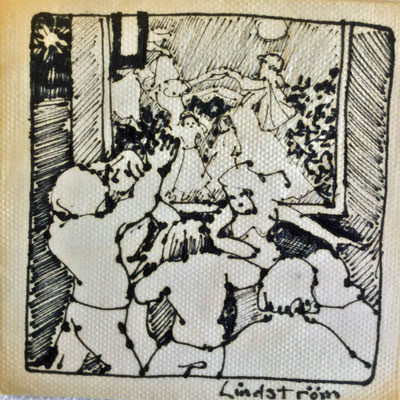
Sea Gull Cellar Bar Napkin Art, sketch of Dancing Fairies by Sandra Lindstrom
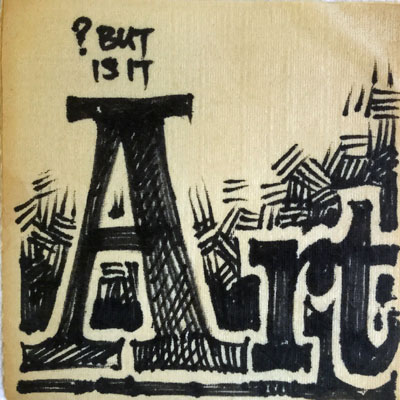
Sea Gull Cellar Bar Napkin Art, John Chamberlin artist
We human beings know a strange thing: happiness responds to circumstances, but, basically, it is internal.
Jennifer Michael Hecht, Doubt: A History
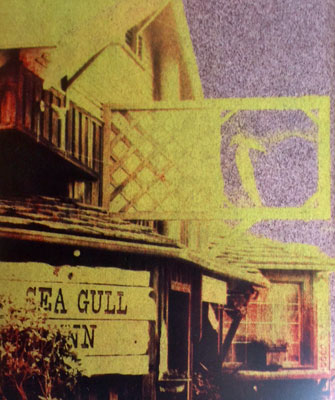
Old Sea Gull, Michael Conn photographer

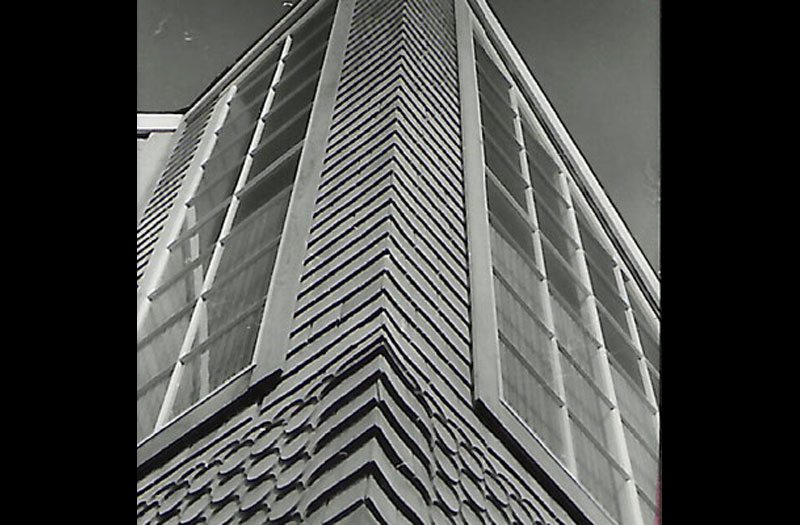
Like I always say…I am so sorry I wasn’t here when this place was in business and alive…..My Regret!
Excellent writing , very historically nostalgic , from a time and place that was very formulating to the Mendocino we know now . Bill Rienstra was one of the rebuilders of the sea gul .
Thank you fo making this history possible David !
David, I miss the SeaGull. So glad it was a part of my life. and napkin art.
My dog Foxy gave birth to puppies on the night it burnt down. I named the only female, Cinder.
The very heart of Mendocino. Never to be replaced. Those names bring back memories.
Then you reincarnated to my finical advisor. Only in Mendocino.
Love you Sue, Thanks for that.